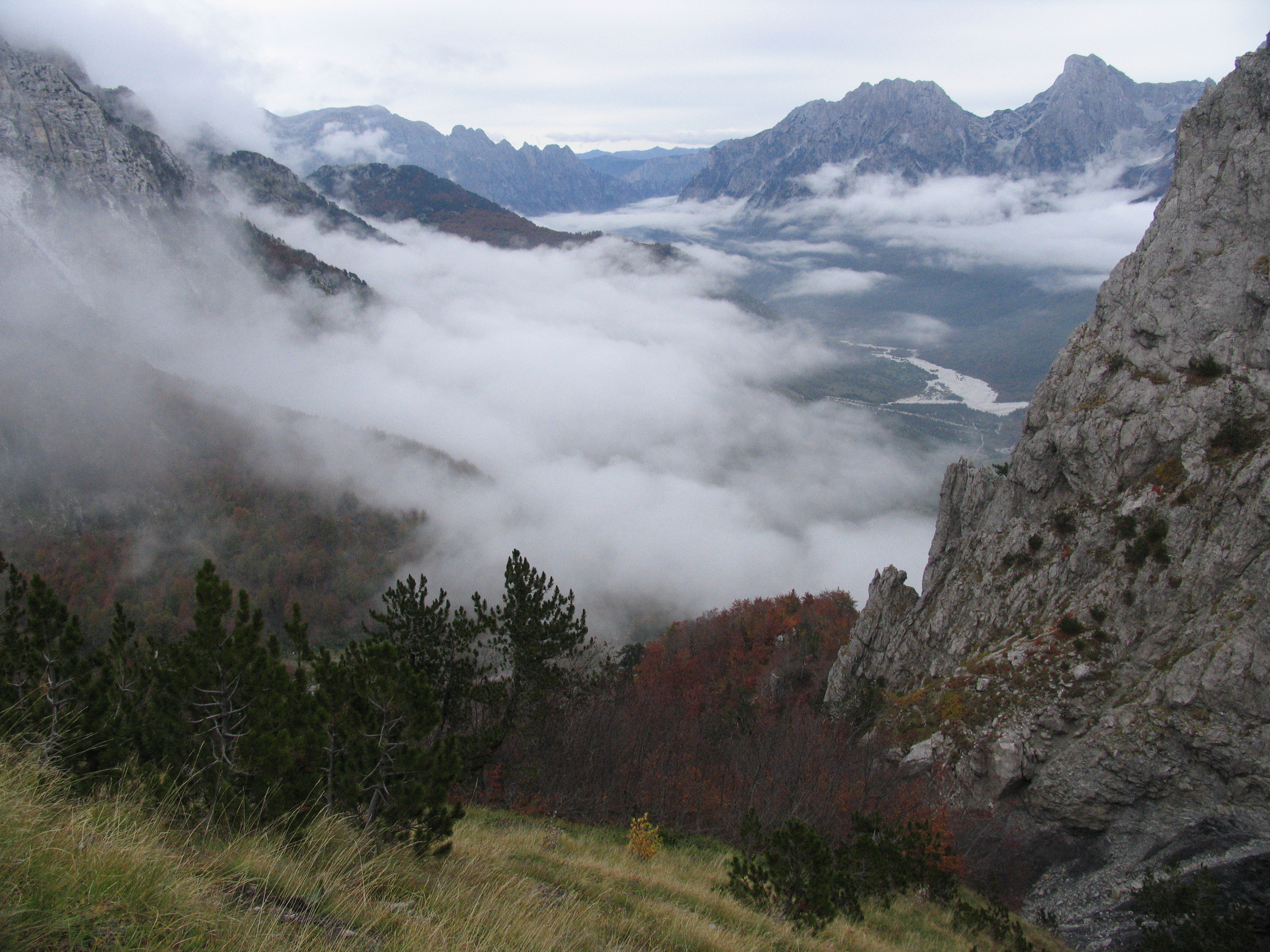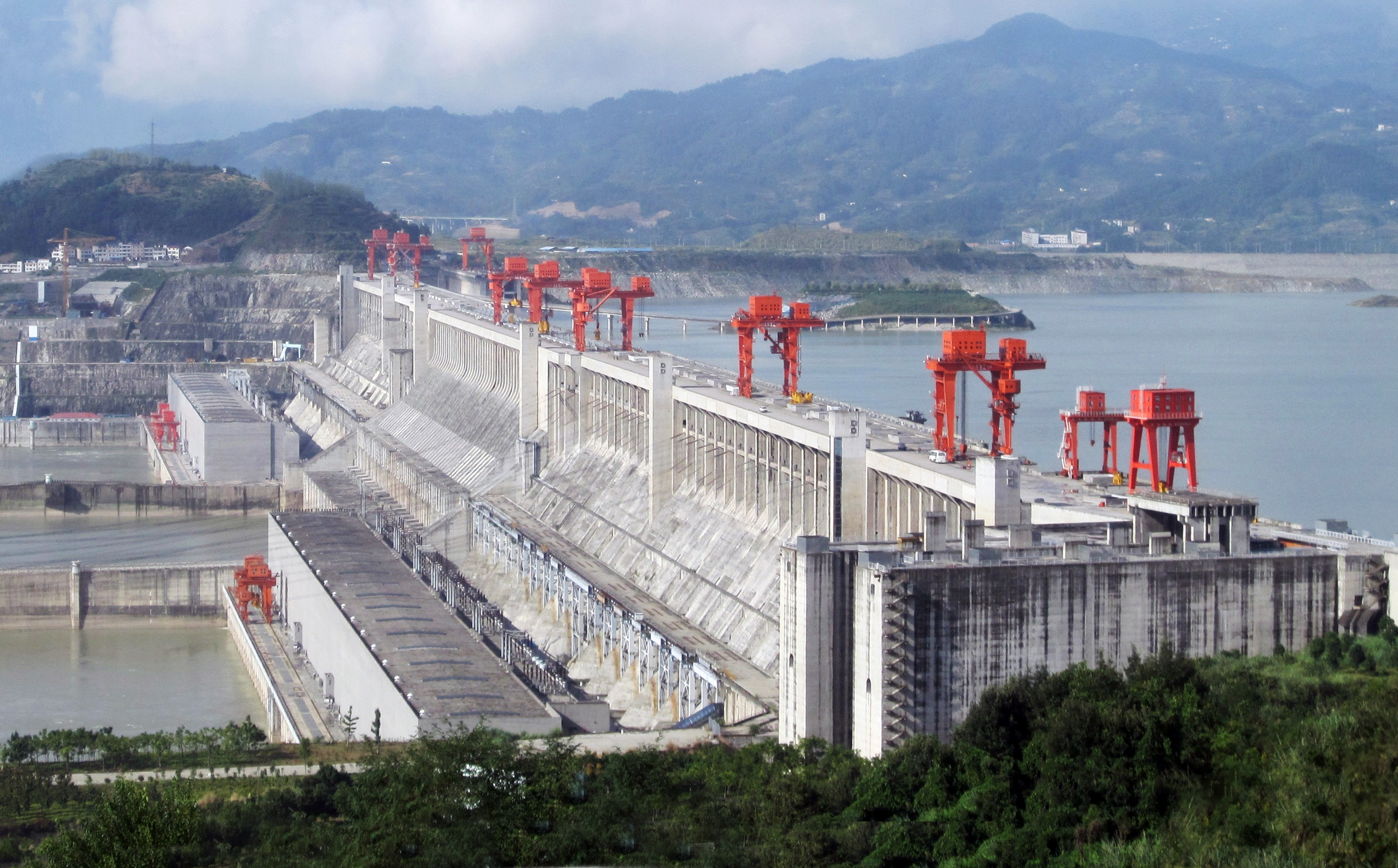|
┼Įabljak (river)
┼Įabljak is a river near Livno in Western Bosnia, Bosnia and Herzegovina. It flows for roughly 6.6 kilometers westward through Livanjsko Polje before its confluence with the Bistrica, just upstream from beginning of its section with artificially created riverbed, from where river begins to turn southward toward Bu┼Īko Blato. This stretch of the ┼Įabljak, like all rivers in the southeastern half of Livanjsko Polje, is regulated. For 3.8 kilometers from its wellspring to the bridge on highway Livno-Split (M107/M16), where remains of an old bridge called "Rimski Most" (literally English: Roman Bridge) can also be found, the ┼Įabljak runs unregulated, and from the bridge to its confluence with Bistrica, 2.8 kilometers, the riverbed is regulated. Before the regulation, required for development of hydroelectric and irrigational system Bu┼Īko Blato, the river joined Bistrica and Sturba to make the Plovu─Źa river, which than continued flowing westward through polje until disappear ... [...More Info...] [...Related Items...] OR: [Wikipedia] [Google] [Baidu] |
Livno
Livno ( sr-cyrl, ąøąĖą▓ąĮąŠ, ) is a city and the administrative center of Canton 10 of the Federation of Bosnia and Herzegovina, an entity of Bosnia and Herzegovina. It is situated on the river Bistrica in the southeastern edge of the Livno Field at the foot of Kruzi plateau which are located beneath the Cincar mountain and rocky hill Crvenice. Livno is the centre of the Canton 10 which mainly covers an area of the historical and geographical region of Tropolje. As of 2013, it has a population of 37,487 inhabitants. The town, with its historic ruins and old town from the 9th century, was first mentioned in 892, developing at the crossroads between the Adriatic coast and inland, i.e., regions of Bosnia, Dalmatia, Herzegovina, and Krajina. History The plains of Livno have been populated since approximately 2000 BC. In the late Bronze Age, the Neolithic population was replaced by more Indo-European tribes known as the Illyrians. The region was inhabited by Illyrian tribe of Dalm ... [...More Info...] [...Related Items...] OR: [Wikipedia] [Google] [Baidu] |
Rivers Of Bosnia And Herzegovina
This is a list of rivers of Bosnia and Herzegovina ordered alphabetically. Draining into the Black Sea * Glina (right tributary to Kupa) ** Glinica (right tributary) *** Bojna *** Bu┼Šimica ** Kladu┼Īnica (right tributary in Velika Kladu┼Īa) * Korana (right tributary to Kupa) ** Mutnica (Korana) (right tributary) * Sava (right tributary of the Danube) ** Bosna (right tributary) *** Babina rijeka (right tributary near/in Zenica) *** Fojni─Źka rijeka ( left tributary) **** Lepenica (Fojni─Źka rijeka) (left tributary) ***** Bijela rijeka (Lepenica) (right tributary near Kre┼Īevo) ***** Crna rijeka (Lepenica) (right tributary near Kre┼Īevo) ***** Kre┼Īevka (right tributary in Kre┼Īevo) **** ┼Įeljeznica (Fojni─Źka rijeka) (right tributary) ***** Draga─Źa (left tributary in Fojnica) *** Goru┼Īa (right tributary in Visoko) *** Krivaja (right tributary in Zavidovi─ći) **** Stup─Źanica (source of the Krivaja (in confluence with the Bio┼Ītica) and right tributary in ... [...More Info...] [...Related Items...] OR: [Wikipedia] [Google] [Baidu] |
Hydrogeology
Hydrogeology (''hydro-'' meaning water, and ''-geology'' meaning the study of the Earth) is the area of geology that deals with the distribution and movement of groundwater in the soil and rock (geology), rocks of the Earth's crust (geology), crust (commonly in aquifers). The terms groundwater hydrology, geohydrology, and hydrogeology are often used interchangeably. Hydrogeology is the study of the laws governing the movement of subterranean water, the mechanical, chemical, and thermal interaction of this water with the porous solid, and the transport of energy, chemical constituents, and particulate matter by flow (Domenico and Schwartz, 1998). Groundwater engineering, another name for hydrogeology, is a branch of engineering which is concerned with groundwater movement and design of wells, pumps, and drains. The main concerns in groundwater engineering include groundwater contamination, conservation of supplies, and water quality.Walton, William C. (November 1990). ' ... [...More Info...] [...Related Items...] OR: [Wikipedia] [Google] [Baidu] |
Geology
Geology () is a branch of natural science concerned with Earth and other astronomical objects, the features or rocks of which it is composed, and the processes by which they change over time. Modern geology significantly overlaps all other Earth sciences, including hydrology, and so is treated as one major aspect of integrated Earth system science and planetary science. Geology describes the structure of the Earth on and beneath its surface, and the processes that have shaped that structure. It also provides tools to determine the relative and absolute ages of rocks found in a given location, and also to describe the histories of those rocks. By combining these tools, geologists are able to chronicle the geological history of the Earth as a whole, and also to demonstrate the age of the Earth. Geology provides the primary evidence for plate tectonics, the evolutionary history of life, and the Earth's past climates. Geologists broadly study the properties and processes of ... [...More Info...] [...Related Items...] OR: [Wikipedia] [Google] [Baidu] |
Dinaric Alps
The Dinaric Alps (), also Dinarides, are a mountain range in Southern and Southcentral Europe, separating the continental Balkan Peninsula from the Adriatic Sea. They stretch from Italy in the northwest through Slovenia, Croatia, Bosnia and Herzegovina, Serbia, Montenegro, and Kosovo to Albania in the southeast. The Dinaric Alps extend for approximately along the western Balkan peninsula from the Julian Alps of the northeast Italy, downwards to the ┼Āar and Korab massif, where their direction changes. The Accursed Mountains, is the highest section of the entire Dinaric Alps; this section stretches from Albania to Kosovo and eastern Montenegro. Maja Jezerc├½ is the highest peak and is located in Albania, standing at above the Adriatic. The Dinaric Alps are one of the most rugged and extensive mountainous areas of Europe, alongside the Caucasus Mountains, Alps, Pyrenees, Carpathian Mountains and Scandinavian Mountains. They are formed largely of Mesozoic and Cenozoic ... [...More Info...] [...Related Items...] OR: [Wikipedia] [Google] [Baidu] |
Dinara
Dinara is a long mountain range in the Dinaric Alps, located on the border of Bosnia and Herzegovina and Croatia. It has four major mountains or peaks, from north-west to south-east: * Ilica or Ujilica (1654 m) * Sinjal or Dinara (1831 m), eponym to the range, highest mountain in Croatia * Troglav (1913 m), highest peak in the range * Kame┼Īnica, with peak Konj (1855 m) Note the dual use of the name ''Dinara'', which is also the origin of the name for the whole Dinaric Alps.''Statistical Yearbook of the Republic of Croatia 2015'', p. 48 The range is composed of limestone and dolomite. Etymology The origin of the name is uncertain. It may deliver from a forgotten Illyrian tribe name, or it is named after a settlement in or near the region. Dinara Mountain Sinjal, often marked as ''Dinara'' on maps, is the highest mountain in Croatia and has an impressive south-western cliff, several hundred meters high, that is prominently visible from the Dalmatian plain below. It ha ... [...More Info...] [...Related Items...] OR: [Wikipedia] [Google] [Baidu] |
Estavelle
In karst geology, estavelle or inversac is a ground orifice which, depending on weather conditions and season, can serve either as a sink or as a source of fresh water. It is a type of ponor or sinkhole A sinkhole is a depression or hole in the ground caused by some form of collapse of the surface layer. The term is sometimes used to refer to doline, enclosed depressions that are locally also known as ''vrta─Źe'' and shakeholes, and to openi .... References Karst Cave geology Dinaric karst formations Dinaric Alps {{geology-stub ... [...More Info...] [...Related Items...] OR: [Wikipedia] [Google] [Baidu] |
Polje
A polje, also karst polje or karst field, is a large flat plain found in karstic geological regions of the world, with areas usually . The name derives from the Slavic languages and literally means 'field', whereas in English ''polje'' specifically refers to a karst plain or karst field. In geology A polje, in geological terminology, is a large, flat-floored depression within karst limestone, whose long axis develops in parallel with major structural trends and can become several miles (tens of kilometers) long. Superficial deposits tend to accumulate along the floor. Drainage may be either by surface watercourses (as an ''open polje'') or by swallow holes (as a ''closed polje'') or ponors. Usually, the ponors cannot transmit entire flood flows, so many poljes become wet-season lakes. The structure of some poljes is related to the geological structure, but others are purely the result of lateral dissolution and planation. The development of poljes is fostered by any blockage i ... [...More Info...] [...Related Items...] OR: [Wikipedia] [Google] [Baidu] |
Sturba (Livanjsko Polje)
Sturba ( sr-cyrl, ąĪčéčāčĆą▒ą░) is a river in Western Bosnia and Herzegovina, and flows through Livanjsko Polje near Livno in Bosnia and Herzegovina. References Rivers of Bosnia and Herzegovina Bu┼Īko Blato basin Livanjsko polje {{BosniaHerzegovina-river-stub ... [...More Info...] [...Related Items...] OR: [Wikipedia] [Google] [Baidu] |
Bosnia And Herzegovina
Bosnia and Herzegovina ( sh, / , ), abbreviated BiH () or B&H, sometimes called BosniaŌĆōHerzegovina and often known informally as Bosnia, is a country at the crossroads of south and southeast Europe, located in the Balkans. Bosnia and Herzegovina borders Serbia to the east, Montenegro to the southeast, and Croatia to the north and southwest. In the south it has a narrow coast on the Adriatic Sea within the Mediterranean, which is about long and surrounds the town of Neum. Bosnia, which is the inland region of the country, has a moderate continental climate with hot summers and cold, snowy winters. In the central and eastern regions of the country, the geography is mountainous, in the northwest it is moderately hilly, and in the northeast it is predominantly flat. Herzegovina, which is the smaller, southern region of the country, has a Mediterranean climate and is mostly mountainous. Sarajevo is the capital and the largest city of the country followed by Banja Lu ... [...More Info...] [...Related Items...] OR: [Wikipedia] [Google] [Baidu] |
Hydroelectric
Hydroelectricity, or hydroelectric power, is electricity generated from hydropower (water power). Hydropower supplies one sixth of the world's electricity, almost 4500 TWh in 2020, which is more than all other renewable sources combined and also more than nuclear power. Hydropower can provide large amounts of low-carbon electricity on demand, making it a key element for creating secure and clean electricity supply systems. A hydroelectric power station that has a dam and reservoir is a flexible source, since the amount of electricity produced can be increased or decreased in seconds or minutes in response to varying electricity demand. Once a hydroelectric complex is constructed, it produces no direct waste, and almost always emits considerably less greenhouse gas than fossil fuel-powered energy plants. [...More Info...] [...Related Items...] OR: [Wikipedia] [Google] [Baidu] |




